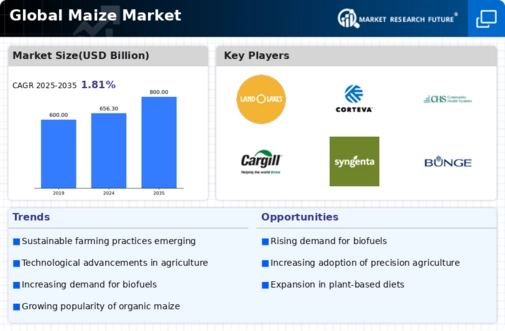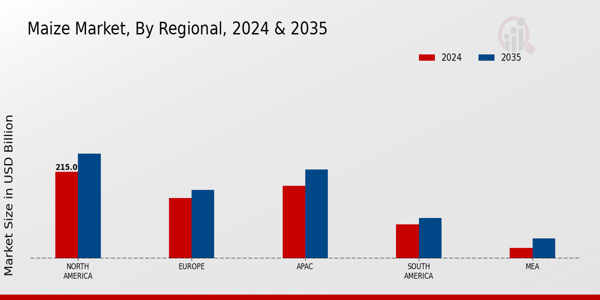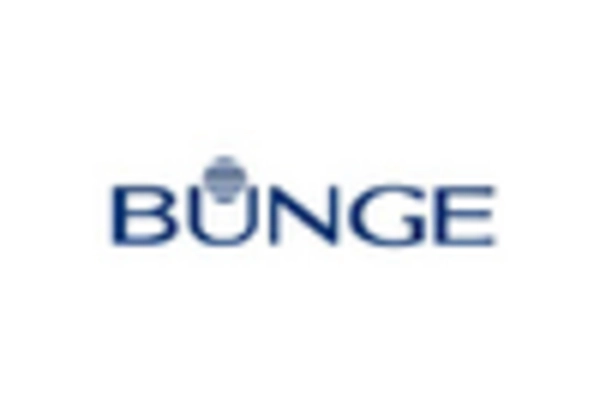The Global Maize Market is characterized by dynamic competition and is influenced by various factors such as agricultural practices, climatic conditions, trade policies, and consumer preferences. Major players in this sector are constantly innovating to enhance their production efficiency, address sustainability concerns, and meet the rising global demand for maize as a staple food, animal feed, and industrial input.
These competitive insights reveal the strategies employed by companies to maintain their market share, including investment in research and development, strategic partnerships, and diversification of product offerings. Understanding the competitive landscape is crucial for stakeholders looking to navigate the complexities of the market, capitalize on emerging opportunities, and address the challenges posed by various socio-economic factors.
Land O'Lakes has established a significant presence in the Global Maize Market, leveraging its extensive experience and strong brand recognition. The company excels in providing high-quality agricultural products and services that cater to the diverse needs of farmers and agricultural businesses.
Known for its commitment to sustainable agricultural practices, Land O'Lakes focuses on improving maize yields through the use of innovative technologies and research-backed solutions. This dedication enhances its competitive edge by fostering loyalty among its customer base and allowing the company to maintain a leadership position in the maize supply chain.
The strengths of Land O'Lakes lie in its robust supply chain management, strategic partnerships, and strong focus on community engagement, which contribute to its resilience and adaptability in a competitive market.
GrainCorp is another formidable player in the Global Maize Market, distinguished by its diverse operations and comprehensive understanding of agricultural dynamics. The company enhances its market presence through an integrated approach that includes grain handling, storage, and marketing services, enabling it to deliver a seamless supply chain experience to farmers and consumers alike.
GrainCorp's strengths are rooted in its advanced infrastructure, which supports efficient grain logistics, and its data-driven strategies that optimize production and supply chain performance. Moreover, the company's commitment to research and development fosters innovation in maize cultivation and processing, allowing it to meet the evolving demands of the market.
By emphasizing sustainability and operational efficiency, GrainCorp positions itself as a leader in the maize sector, effectively responding to market challenges and consumer preferences.


















Leave a Comment